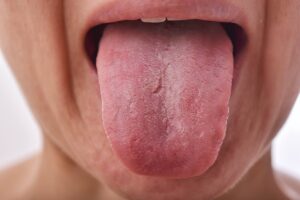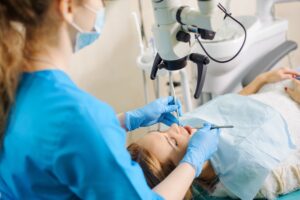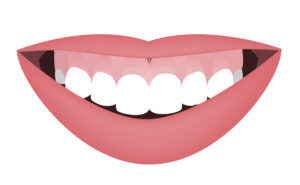Header logo
header top contact widget
Sore or swollen gums
Dental Pain Relief With Patient’s Well-Being In Mind
Posted on Aug 19, 2022 by William J. Claiborne, DDS MS
 The body relies on a nervous system for many reasons; one reason being to alert us that something is wrong. For example, when we burn our finger on the stove, the brain quickly sends pain sensations so we can remove the finger and take action to help it repair.
The body relies on a nervous system for many reasons; one reason being to alert us that something is wrong. For example, when we burn our finger on the stove, the brain quickly sends pain sensations so we can remove the finger and take action to help it repair.
As a periodontal specialist in Asheville NC, I know how sensitive the gums can be, as well as teeth. A toothache or a cut in the mouth can be miserable for days. As a periodontist, ideally my skills allow patients to avoid being in pain by keeping their mouths healthy. When an individual maintains a clean mouth that has a low level of bacteria, they can avoid developing cavities and gum disease, which can both result in a significant amount of constant pain.
Yet, caregivers in the American healthcare system are very much aware of the opioid epidemic. We don’t want to deny legitimate patients the medications they need to get them out of pain, however, neither do we want to be a catalyst or contributor to an individual who becomes dependent on these or is trying to feed an already existing habit.
The dental profession has been very careful in this regard, according to the American Journal of Preventive Medicine. In 2012, dentists in the U. S. prescribed only 6.4% of the total opioid prescriptions. For procedures such as root canals or extractions, they help patients get through the initial part of recovery when pain levels are most extreme.
As opioid abuse became such a significant problem, dentists became more sensitive to prescribing these medications. In 2016, American Dental Association (ADA) issued a Statement on the Use of Opioids in the Treatment of Dental Pain.
“Dentists should consider non-steroidal anti-inflammatory analgesics as the first-line therapy for acute pain management … [and]should recognize multimodal pain strategies for management for acute postoperative pain as a means for sparing the need for opioid analgesics.”
Non-steroidal anti-inflammatory analgesics are commonly known as NSAIDs. These are typically over-the-counter meds, such as Advil, Aleve, Motrin, etc. These are non-opioid, oral medications for temporary relief of acute dental pain.
NSAIDs work to provide effective pain relief by reducing inflammation in the bone, dental pulp, and gum tissues. The ADA encourages dentists to consider NSAIDs as the preferred go-to method for managing acute pain. When NSAIDs are taken after a dental procedure, they have been shown as effective as opioids for reducing pain intensity. For some pain levels, the dentist may prescribe a higher dose (by prescription).
Although NSAIDs are effective and less likely to cause dependency, they can also inhibit the an enzyme responsible for producing other prostaglandins that provide numerous beneficial effects. This includes those that protect the gastrointestinal mucous lining, blood flow to the kidneys, and blood clotting.
NSAIDs could also heighten the risks for serious cardiovascular issues, including heart attack and stroke. NSAIDs gave the potential to trigger issues that complicate the effects of low-dose aspirin.
Another option for managing dental pain is the use of Acetaminophen (such as Excedrin and Tylenol). Acetaminophen is an internal analgesic available in over-the-counter medicines for the temporary relief of minor aches and pains and helping to reduce fever. It can also be found in medicines that contain more than one active ingredient to treat migraines.
Acetaminophen is often used for things like headaches, muscle aches and menstrual cramps. It can also be an ingredient in other medicines.
Please know that I want no less for my patients’ comfort than I would want for myself or loved ones. Pain can be an overwhelming problem, although gum disease and cavities are highly preventable. With proper at-home oral hygiene and regular dental check-ups, an individual can keep a healthy smiles and prevent tooth loss (to a signifiant degree).
Even so, the Agency for Healthcare Research & Quality shared that there were more than 615 emergency room visits for every 100,000 people in the U.S. in 2018. The statistic is much higher for low-income and minority groups.
Let’s work together to protect our population from the impact it has endured from opioid addiction. Prior to treatment, we will discuss the potential for discomfort or pain afterward and standard treatment options to help ease you through recovery.
If you are experiencing sore, tender gums that bleed easily when brushing or a deep ache like a toothache, do not delay in seeking dental care. When something is wrong in the mouth, there are very few instances that will go away on their own. Most problems worsen over time, leading to higher levels of discomfort and more-involved treatment to resolve the problem.
In our Asheville eriodontal dental office, we offer some of the most advanced technology available in dentistry, including ConeBeam 3D imaging, laser dentistry, and computerized dental implant placement technology. Additionally, we provide oral and I.V. sedation, safely and monitored closely.
Call 828-274-9440 or tap here to arrange an appointment.
Sources:
https://www.deltadentalwa.com/blog/entry/2019/09/dental-pain-management
https://hcup-us.ahrq.gov/reports/statbriefs/sb280-Dental-ED-Visits-2018.pdf
What Is Causing You To Have Bad Breath Odor
Posted on Aug 09, 2022 by William J. Claiborne, DDS MS
It’s one thing to have “coffee mouth” or give off telltale signs of having onions on a burger at lunch. It’s another to be “that person” who has an embarrassing reputation for bad breath.
Bad breath happens to us all. After all, waking up first thing in the morning reminds us that our mouths are “not so fresh.” However, bad breath is generally easy to avoid. Below, I’ll share some ways to feel confident in closeness.
But first, let me explain how bad breath begins. The origin of most bad breath occurs from too many bacteria in the mouth. On a day-to-day basis, oral bacteria are normal and not problematic. However, when the mouth contains an overload of oral bacteria.
Bacteria thrive in warm, dark, moist places. That’s precisely the environment they have in the oral cavity (the mouth). Bacteria are living, eating and reproducing organisms. They thrive on rotting food particles in the mouth and attack tender gum tissues.
As they amass, a sticky film forms, known as plaque. If not brushed away daily, plaque hardens on teeth into tartar (or calculus). This cement-hard form of bacteria attacks tooth enamel and gums.
The faster bacteria reproduce, the faster is the damage potential caused by these destructive organisms. The accumulation of these bacteria results in the production and release of volatile sulfur compounds (VSCs), which causes a smelly breath odor.
The most common causes of bad breath include poor oral hygiene, gum diseases and dry mouth, a condition in which the salivary glands cannot make enough saliva to keep the mouth moist.
Not surprisingly, one of the symptoms of periodontal (gum) disease is persistent bad breath. This is a foul odor in the mouth that exists even shortly after brushing. Gum chewing and mints may mask it temporarily, but it is actually the scent of gum tissues being destroyed in the mouth. You may also notice tender gums that bleed easily when brushing.
Dry mouth is another contributing factor to bad breath, primarily because oral bacteria thrive when they are not being rinsed away through saliva. Saliva is the mouth’s natural rinsing agent and sweeps bacteria out on a continual basis. Without sufficient saliva, bacteria are able to reproduce at a more rapid pace.
Several causes for dry mouth are smoking, some illnesses, snoring and mouth-breathing, and certain medications. The aging process also leaves adults with less saliva flow. Drinking alcohol and caffeinated beverages are drying to the mouth as well.
When you feel your mouth is dry, the ideal aid to the saliva you have is drinking filtered water. Water is the perfect beverage when it comes to supporting your oral health. It also helps to keep your body more hydrated, which aids in overall function. Chewing sugarless gum also enhances saliva flow and is advised after meals when brushing is not possible.
The tongue is also a tremendous source of oral bacteria. With its tiny grooves, bacteria embed in the tongue and enjoy a warm, moist haven for reproduction. This is why using a tongue scrapper daily or brushing the tongue with your tooth brush can help reduce the amount of bacteria in your mouth quite a bit. Be sure to get to the back of the tongue where the majority of oral bacteria live (even though you may cause some slight gagging while doing so).
If you want fresh breath, the key, obviously, is to control the amount of bacteria in your mouth. Begin with a clean mouth through your six-month dental cleanings and exams. These appointments help to remove buildup that has accumulated between visits, reducing the amount of bacteria in the mouth.
Then, twice daily, brush for at least two minutes, floss daily and use a tongue scraper or brush your tongue. Drink lots of water during the day. Limit sugary treats or drinks since bacteria are super-charged by sugars and carbohydrates. Swish after eating or drinking, especially coffee or a glass of wine to counteract drying effects.
If you are dealing with bad breath on a persistent basis, a periodontal exam is recommended. Through this, we can determine its cause and help to remedy or control it so you have worry-free closeness. The specialized skills of a periodontist provides you with a direct path to fresh breath.
Call our Asheville periodontal dental office at 828-274-9440. If fear or anxiety associated with dental visits has kept you from having regular dental care, please mention this when you schedule as well as during our initial consultation. We have an exceptional track record in caring for fearful dental patients and also offer oral or I.V. sedation, when desired.
Pregnancy Gingivitis Can Affect More Than The Mother’s Health
Posted on Jul 14, 2022 by William J. Claiborne, DDS MS
Is there any other time in a female’s life when they must be as health conscious as during pregnancy?
Pregnant women, it seems, are given a long list of guidelines to follow… What they should not eat or drink, what medications to avoid, and even down to what beauty products to give up. Yet, the 9 months of discipline is well worth the greater potential to bring a healthy baby into the world.
Along with the other health guidelines, obstetricians are now urging pregnant women to pay particular attention to their oral health. For decades, research has tracked a correlation between inflammatory bacteria in the mouth to a number of serious health problems, including many far beyond the mouth.
Once the infectious bacteria of gum disease enter the bloodstream (typically through tears in weakened gum tissues), it can trigger inflammatory reactions, many serious and some that can have deadly consequences. It is the nation’s’ leading cause of adult tooth loss and has been linked to heart disease, stroke, some cancers, diabetes, arthritis, high blood pressure and impotency.
However, because of their susceptibility, the risk for full-blown gum disease is higher for pregnant females with nearly a third developing gum disease. Yet, it’s not just the oral (and overall) health of the mother that can be affected.
Research has shown that gum disease increases the risk for pre-term delivery (prior to 37 weeks) and babies of low birth weight (less than 5.5 lbs.). One study showed the preterm birth rate for females without gum disease to be approximately 11% compared to nearly 29% for pregnant women with moderate to severe periodontal disease.
One study showed that pregnant women with gum disease were 4 – 7 times more likely to deliver prematurely (before week 37) and underweight babies than mothers with healthy gums. Too, the women with the most severe periodontal (gum) disease delivered most prematurely, at 32 weeks.
Other findings show that gum disease increases the risks of late-term miscarriage and pre-eclampsia. When oral bacteria reach placental membranes via the bloodstream, inflammatory reactions can trigger pre-eclampsia or early labor.
In one study, for example, pregnant females with higher blood levels of antibodies to oral bacteria also had higher rates of preterm birth and babies of low birth weight. These elevated antibodies have been found in amniotic fluid and fetal cord blood samples of infants who were preterm or of low birth weight at birth.
Oral problems in pregnant females can begin even when the mother-to-be is following the same oral hygiene routine as they have previously. The greater susceptibility can be blamed on fluctuating hormone levels during pregnancy. These changes increase the risk for gingivitis (inflammation of the gums) and periodontal disease.
This is why approximately 40% of women develop gingivitis during pregnancy, known as pregnancy gingivitis. Pregnancy gingivitis is a mild form of gum disease that causes gums to become swollen, tender and bleed easily when brushing.
This is the result of an increased level of progesterone in pregnancy, which makes oral bacterial growth easier. Progesterone also makes gum tissues more sensitive to plaque. For those who have significant gum disease prior to pregnancy, being pregnant can make the condition worse.
Gum inflammation typically appears between months 2 and 8 of pregnancy. Signs of pregnancy gingivitis range from gums that are red rather than a healthy pink. Gums will often bleed when brushing teeth and be swollen and tender in spots.
The goal is to prevent pregnancy gingivitis before it occurs. Be committed to a thorough oral hygiene regimen at home, which includes brushing twice a day, flossing daily and swishing with an antimicrobial mouth rinse. Be sure to keep your 6-month cleanings and exams. These will remove any plaque buildup that has occurred between visits.
A periodontist has specialized training in the diagnosis and treatment of all levels of gum disease – in a way that is safe for pregnant women (as well as all patients). Signs and symptoms of gum disease include gums that bleed when brushing, frequent bad breath, swollen or tender gums, gums that loosen or pull away from the base of teeth, or gums that darken in color.
If you have any of these symptoms (whether pregnant or not), you are urged to schedule an appointment at your earliest convenience. Call our Asheville periodontal dental office at 828-274-9440 to arrange an examination to begin.
Many Reasons To Repair Gum Recession
Posted on May 19, 2022 by William J. Claiborne, DDS MS
If you are occasionally experiencing sensitivity around one or more teeth, especially when eating ice-cream or drinking hot coffee, this is likely due to receded gums.
While using a sensitivity toothpaste can somewhat minimize these sensations (which can become painful jolts), the problem will remain. The source of sensitivity, most often, is because the highly-sensitive tooth’s root area has been exposed by the pulling away of gum tissues.
The gum tissues are designed to provide a tight seal around the base of each tooth, which blocks bacterial entry to the sensitive tooth root area. In addition to sensitivity, recession means oral bacteria can penetrate beneath the gum’s surface. Once beneath the surface, the accumulating presence of this bacteria can lead to inflammation of the gums.
Eventually, the infectious bacteria attack the structures that support natural teeth. This bacteria indicates the presence of periodontal (gum) disease. Signs and symptoms of gum disease in its first stage include:
• Gum tissues that turn red
• Gums that become tender or swollen
• Gums that bleed when brushing
• Persistent bad breath
Obviously, it’s important to ensure the gums are healthy so the grip they have around teeth is snug. It’s also important to be aware of the causes of gum recession. These are:
The aging process – As people age, their gums become drier. This causes them to shrink and be less capable of keeping a secure grip around the base of teeth.
Periodontal (gum) disease – As mentioned above, gum disease destroys oral tissues and the bone that supports natural tooth roots. A sign of periodontal disease is gum recession. Gum disease is also the nation’s leading cause of adult tooth loss.
Poor dental hygiene – When twice-daily brushing, daily flossing, and keeping the mouth moist are insufficient to rid the mouth of bacteria, their accumulation can result in the sticky film you feel on teeth. This is plaque. In just a day or so, plaque can harden on teeth into tartar. This is a cement-hard bacterial colony that cannot be removed by brushing or flossing . It can only be removed during a professional tooth cleaning. If not removed, teeth, gums and the structures below the gum line can be damaged.
Brushing too hard – Brushing teeth rigorously doesn’t mean you are doing a good job. Using a scrubbing, back-&-forth motion can wear away tooth enamel and cause the gums to recede. Other damaging actions when brushing are or using a hard bristled toothbrush or abrasive substances, such as baking soda.
Hormones – Females experience fluctuations in estrogen levels during puberty, menstrual periods, pregnancy and menopause. During these times, the gums can be more sensitive and vulnerable to gum recession.
Tobacco use – In addition to the many health hazards smokers risk, they are more likely to develop plaque due to the oral drying effects of smoking. This dryness can lead to gum recession (not to mention brown teeth and bad breath).
Bite misalignment – When teeth don’t come together evenly, too much force can be exerted on the gums and surrounding bone, allowing gums to recede. Bite misalignment can also lead to grinding or clenching teeth. These harsh forces on teeth can cause the gums to loosen their grip.
If you have mild sensations of sensitivity, desensitizing toothpastes can help soothe the nerves by forming a protective barrier over teeth while blocking sensitivity signals. Although this type of toothpaste can be helpful, it should be used as a temporary aid.
The goal should be to repair recession and halt the problem from recurring. To do this, we begin by determining why the gum recession is occurring. The next step is to restore the gums to their proper positions.
The corrective procedure most often performed is a “gingivectomy” performed by a periodontal specialist. In addition to treating all stages of gum disease, a periodontist specializes in contouring gum tissues. Using advanced skills, a periodontist is able to create a natural look and restore your oral health.
A gingivectomy can reposition or graft gum tissues over the area of recession to restore a healthy seal and protect the tooth structures below the surface.
Another advantage of a gingivectomy is to help save a natural tooth. When a tooth breaks near the gum line, a “crown lengthening” procedure may be advised. In this, a periodontist may be able to expose enough of the tooth structure for the placement of a crown.
A crown lengthening procedure is an ideal accompaniment to many cosmetic dentistry treatments. When there are different heights of gum tissues framing the teeth most visible in a smile. This tends to create a jumbled looking smile, when when the teeth are straight.
Crown lengthening rebalances the height of gum tissues that arch the teeth to restore a smile that is balanced. From this, the eye is drawn to the smile as a whole rather than one or two teeth with varying heights of gum tissue.
 A gingivectomy is also performed for individuals who wish to correct a “gummy smile.” This is when a smile shows too much gum tissue above upper teeth when smiling fully.
A gingivectomy is also performed for individuals who wish to correct a “gummy smile.” This is when a smile shows too much gum tissue above upper teeth when smiling fully.
Gingivectomies are performed while the patient is comfortably numbed. For some people, sedation may be a preference for enhanced relaxation. Oral sedation is available in pill form, which allows patients to ‘doze’ through procedures. I.V. sedation, also known as “twilight sleep”, is available for patients who prefer a deeper level of sedation.
Both sedations are administered by fully trained team members who use advanced safety monitoring equipment. We believe your safety is as important as your comfort.
In our Asheville periodontal dental office, we also offer a wide array of technology. This often saves the patient time in treatment, enhances comfort, and speeds healing. For example, our dental laser can seal tissues as it contours it. This eliminates or greatly minimizes bleeding.
Pain is how the body indicates that something is wrong. When the gum tissues have receded, they are not going to repair on their own. Let’s discuss your particular needs, whether for improved oral health or to enhance the appearance of your smile (or both) during a consultation appointment.
Call 828-274-9440 to schedule a time.
Recent Posts
Categories
Archives
- September 2024
- August 2024
- July 2024
- June 2024
- May 2024
- April 2024
- March 2024
- February 2024
- January 2024
- December 2023
- November 2023
- October 2023
- September 2023
- August 2023
- July 2023
- June 2023
- May 2023
- April 2023
- March 2023
- February 2023
- January 2023
- December 2022
- November 2022
- October 2022
- September 2022
- August 2022
- July 2022
- June 2022
- May 2022
- April 2022
- March 2022
- February 2022
- January 2022
- December 2021
- November 2021
- October 2021
- September 2021
- August 2021
- July 2021
- June 2021
- May 2021
- April 2021
- March 2021
- February 2021
- January 2021
- December 2020
- November 2020
- October 2020
- September 2020
- August 2020
- July 2020
- June 2020
- May 2020
- April 2020
- March 2020
- February 2020
- January 2020
- December 2019
- November 2019
- October 2019
- September 2019
- August 2019
- July 2019
- June 2019
- May 2019
- April 2019
- March 2019
- February 2019
- January 2019
- December 2018
- November 2018
- October 2018
- September 2018
- August 2018
- July 2018
- June 2018
- May 2018
- April 2018
- March 2018
- February 2018
- January 2018
- December 2017
- November 2017
- October 2017
- September 2017
- August 2017
- July 2017
- June 2017
- May 2017
- April 2017
- March 2017
- February 2017
- January 2017
- December 2016
- November 2016
- October 2016
- September 2016
- August 2016
- July 2016
- June 2016
- May 2016
- April 2016
- March 2016
- February 2016
- January 2016
- December 2015
- November 2015
- October 2015
- September 2015
- August 2015
- July 2015
- June 2015
- May 2015
- April 2015
- March 2015
- February 2015
- January 2015
- December 2014
- November 2014
- October 2014
- September 2014
- August 2014
- July 2014
- June 2014
- May 2014
- April 2014
- March 2014
- February 2014
- January 2014
- December 2013
- November 2013
- October 2013
- September 2013
- August 2013
- July 2013
- June 2013
- May 2013
- April 2013
- March 2013
- February 2013
- January 2013
- December 2012
- November 2012
- October 2012
- September 2012
- August 2012
- July 2012
- June 2012


